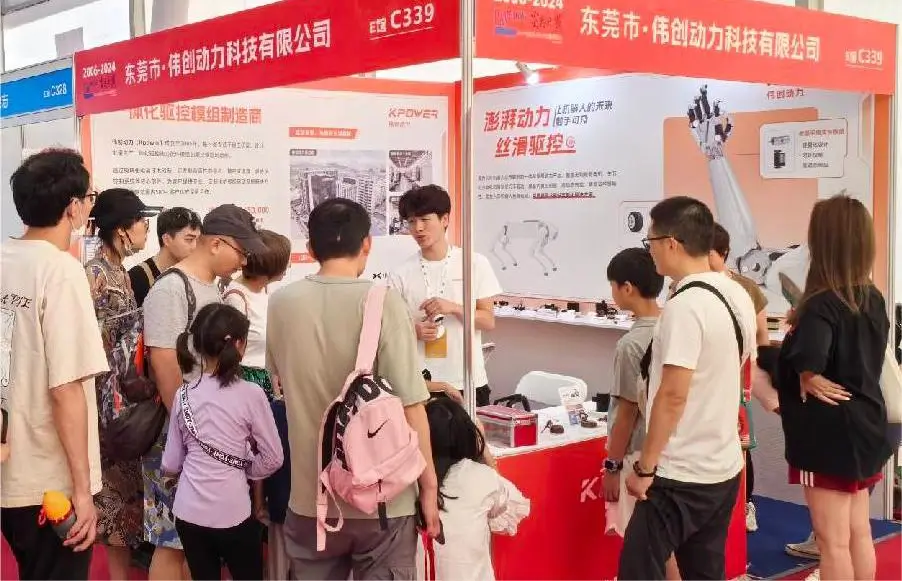Sure! Here's the first part of the article with the requested format. I'll provide the second part afterward.

When it comes to building interactive and responsive projects, combining a joystick with a servo motor using Arduino is an excellent choice. The joystick offers precise directional input, while the servo motor delivers mechanical movement, making it ideal for robotics, automation, and even gaming systems. This article will guide you through the basics of setting up a joystick and servo motor with Arduino, and show you how to unlock their potential in creative and practical applications.
Understanding the Basics: Joystick, Servo Motor, and Arduino
Before diving into the actual setup, it’s essential to understand the components you'll be working with:
Joystick: A joystick is essentially a 2-axis control device, often used in video game controllers. It consists of two potentiometers—one for horizontal (X-axis) and another for vertical (Y-axis) movement. By manipulating the joystick, you can send signals that are interpreted by the Arduino, enabling real-time control.
Servo Motor: A servo motor is a small, powerful motor that provides precise angular movement. Unlike regular motors, servos can rotate to specific positions, making them perfect for applications requiring exact control, such as in robotic arms, camera gimbals, or pan-and-tilt systems.
Arduino: Arduino is an open-source electronics platform based on easy-to-use hardware and software. It’s designed for building digital devices and interactive objects. The Arduino board takes input from the joystick and processes it to control the servo motor, allowing you to manipulate real-world objects.
What You Need for Your Project
To get started, you’ll need a few basic components:
Arduino Uno or any compatible board: This will serve as the brains of your project, processing inputs and sending signals to control the servo motor.
Joystick Module: This component typically comes in a simple 2-axis configuration with two analog pins (X and Y), allowing you to control movement along both axes.
Servo Motor: A standard small servo motor will work perfectly for this project.
Breadboard and Jumper Wires: These will help you make the necessary connections between the Arduino, joystick, and servo.
Power Source: A USB cable to power the Arduino or an external power supply for more demanding setups.
Arduino IDE: The software platform used to write and upload code to the Arduino board.
Wiring It All Together
Setting up the circuit is simple. Here’s how you can wire everything:
Connect the Joystick to Arduino: The joystick has five pins—VCC, GND, X, Y, and a switch.
Connect VCC to the 5V pin on the Arduino.
Connect GND to the GND pin on the Arduino.
Connect the X-axis pin to A0 (Analog Pin 0) on the Arduino.
Connect the Y-axis pin to A1 (Analog Pin 1) on the Arduino.
Optionally, you can use the joystick's switch pin, but for basic control, we won’t be using it in this tutorial.
Connect the Servo Motor:
Connect the power (red wire) and ground (black wire) of the servo to the 5V and GND pins on the Arduino, respectively.
Connect the signal wire (usually white or yellow) of the servo to Pin 9 on the Arduino.
Arduino Code Overview
Once your hardware is set up, it's time to write the code to make everything work. The code will read the joystick’s X and Y axis values and translate them into servo positions.
Here’s a simple breakdown of what the code does:
The joystick’s analog output is read by the Arduino using the analogRead() function. These readings correspond to the position of the joystick along the X and Y axes.
The servo motor position is then adjusted based on the joystick input. The Arduino will convert the joystick’s range (typically 0-1023) to the servo’s valid range (0-180 degrees).
Below is a basic code snippet to get you started:
#include
Servo myServo;
int joyX; // Joystick X-axis value
int joyY; // Joystick Y-axis value
int servoX; // Servo position for X-axis
int servoY; // Servo position for Y-axis
void setup() {
myServo.attach(9); // Attach the servo to pin 9
Serial.begin(9600); // Start the serial communication
}
void loop() {
joyX = analogRead(A0); // Read the X-axis value
joyY = analogRead(A1); // Read the Y-axis value
// Map joystick values to servo angles (0-180 degrees)
servoX = map(joyX, 0, 1023, 0, 180);
servoY = map(joyY, 0, 1023, 0, 180);
// Move the servo based on the joystick position
myServo.write(servoX); // Set the servo's position based on X-axis
delay(15); // Wait for the servo to reach the position
}
This code reads the joystick’s X and Y values and maps them to the servo motor's 0-180-degree range. As you move the joystick, the servo will follow the changes, providing real-time, analog control.
Testing Your Setup
After uploading the code to your Arduino, power up the system and test it. When you move the joystick, you should see the servo motor move in response. The joystick’s left-right movement should control the horizontal positioning, and the up-down movement will control the vertical position.
Common Troubleshooting Tips
Servo Not Moving: Ensure the servo is properly connected to the 5V and GND pins. Double-check your wiring and ensure you’ve connected the signal pin to the correct Arduino pin (Pin 9 in this case).
Joystick Not Responding: If the joystick doesn't seem to respond or has erratic behavior, verify that the X and Y pins are correctly wired to the analog input pins (A0 and A1).
Servo Moving Erratically: If the servo is jittering or not moving smoothly, it might not be getting enough power. Ensure that the Arduino's 5V pin can supply enough current, or use an external power supply if necessary.
Established in 2005, Kpower has been dedicated to a professional compact motion unit manufacturer, headquartered in Dongguan, Guangdong Province, China.




































